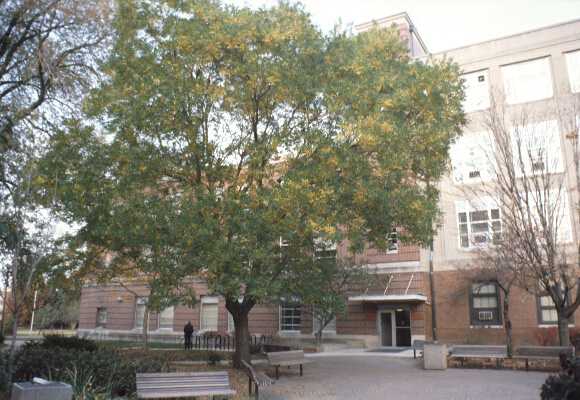Home Page | Selecting Trees for Biodiversity | Pea Family
Japanese Scholar Tree, Pagoda Tree (Sophora japonica)
Background
Like the chinquapin oak, this plant is relatively small in stature after thirty years of growth (~25-35 feet). As such it is considered a good choice for planting under powerlines. Over time, sophora can grow to become much larger. This plant has attractive white flowers in mid summer. The amber fruit is somewhat showy and attractive to birds. The tree holds its green leaves well into November in zone 5, and along with its bright yellow-green twigs provides fall and winter interest. This tree has adapted well to alkaline soils.
Like many legumes, Sophora also tolerates poor soils. The plant has done well in restricted root space and in urban sites. The bark is quite thin and subject to mechanical damage when the plant is young. This becomes less of a factor as the plant begins to exceed six inches in caliper.
The tree will grow in zones 5 and 6. A cold-hardy seed source is a primary concern for zones 5 and 6. Ohio tests have shown that some seed sources of Japanese Scholar tree not reliably hardy in the colder areas of the state. Sensitivity to Nectria canker is a manifestation of lack of cold tolerance. The proper seed sources should reduce this problem dramatically. Cultivars such as "Regent" have shown to be cold sensitive and should not be used in cooler zones.
|

Japanese Sohpora Tree, Late Autumn, Columbus, Ohio.
|
Shade Tree Home Page
T. Davis Sydnor, Ph. D. and Nick E. D'Amato
Urban Forestry Department
School of Natural Resources
The Ohio State University
2021 Coffey Road,
Columbus OH 43210
(614) 292-3865
|
